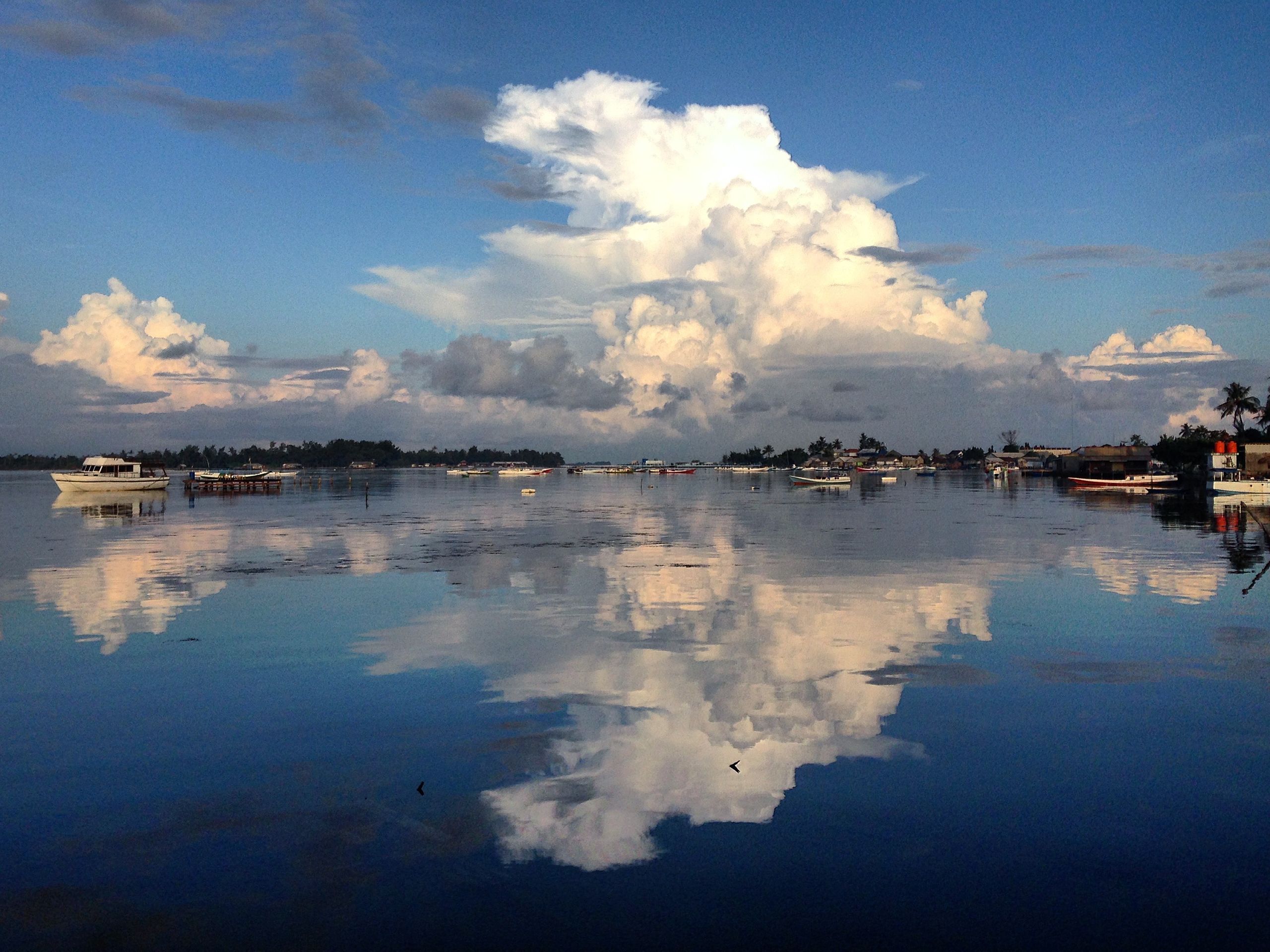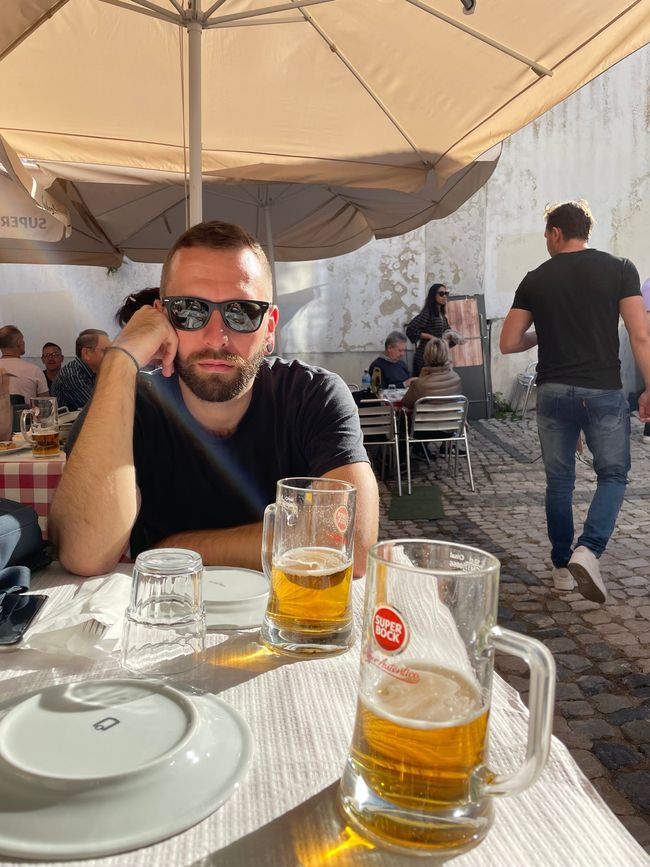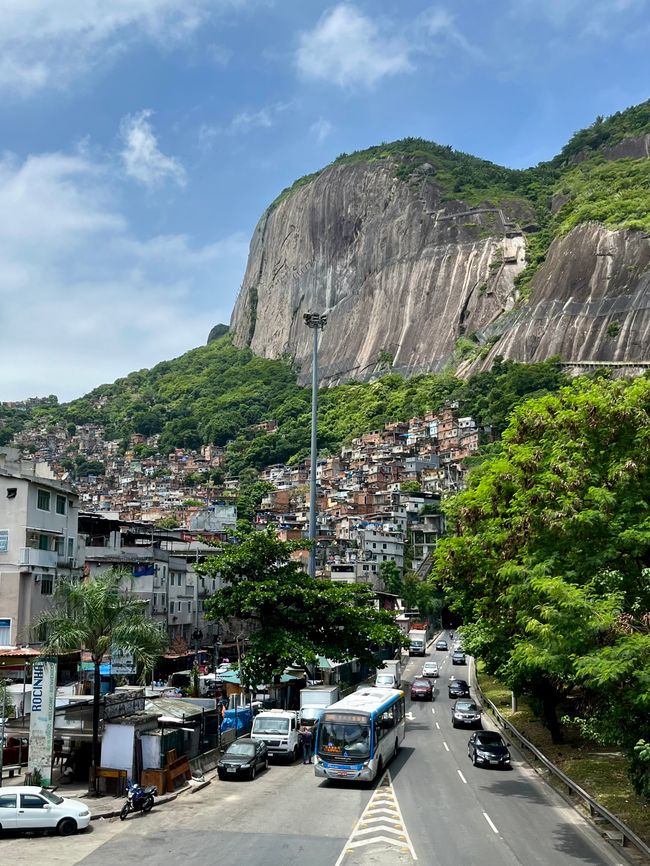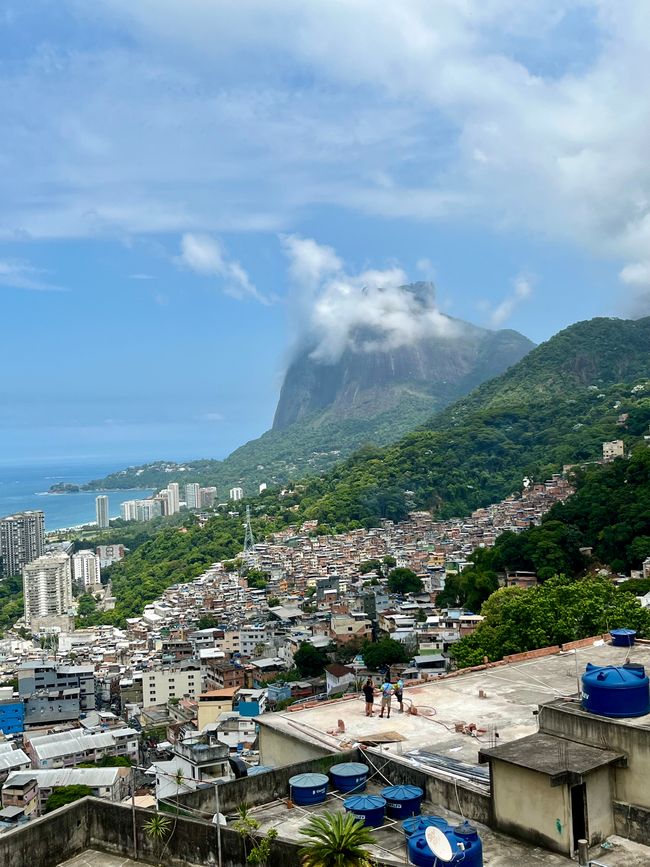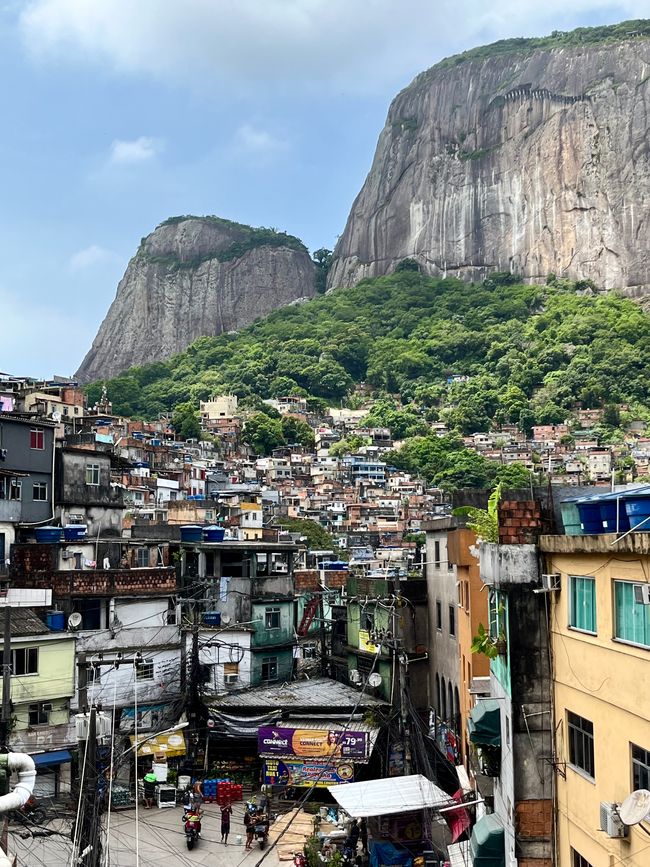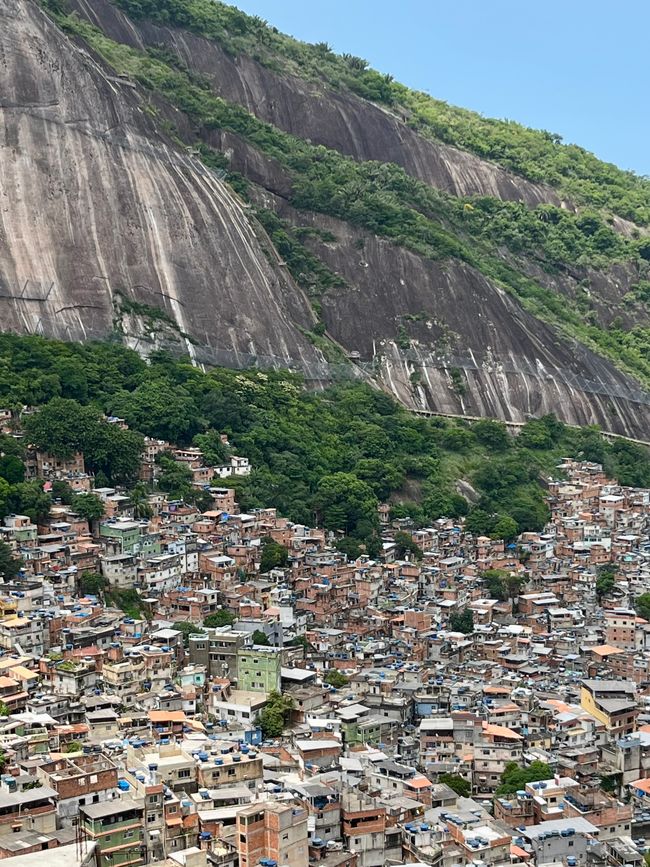Favela Rocinha
Pubblicato: 13.03.2024
Iscriviti alla Newsletter
After we had already explored the Santa Marta favela on our own, we planned another guided tour to the Rocinha favela shortly before the end of our time in Rio. Rocinha is considered the largest favela in Latin America, where, according to unofficial figures, up to 250,000 people live. Theoretically, you can enter the favela without a guide, but due to its immense size, a guided tour is recommended, as it is quite easy to lose track in the maze of alleys and paths.
The tour was booked directly at the hostel; according to information from another guest, the guide was supposed to be a resident of the favela and the fee paid (around €25) went directly to the municipality.
However, this was probably false information, because when we were picked up at 9 a.m., it turned out that our guide was an employee of an agency and therefore the income from the tourists should only go to the company. Well, that's just how it was, gritting my teeth and getting on the bus and listening to our guide's countless bad jokes during an almost 2-hour city tour (during which numerous other tourists from all sorts of hotels and inns were escorted onto the bus).
When we finally arrived in Rocinha, there was a brief overview of the graffiti depicted on a wall: The motifs are intended to give hope to the young residents and symbolically show that there is a way out of favela life.
Immediately afterwards we passed all sorts of stalls and there was a lot of advertising for the art and also the junk, although our group's enthusiasm for buying was very limited.
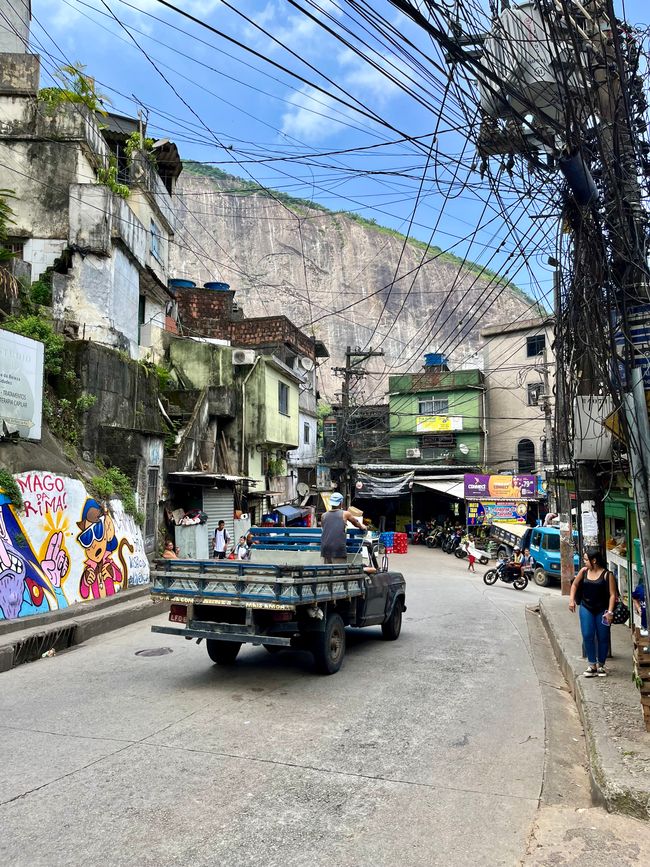
We continued on to the next shop, but slightly annoyed I decided to wait outside because the hustle and bustle on the street seemed far more interesting to me than neatly hung paintings that I didn't want to buy anyway.
Afterwards the sales event was over and we reached a viewing point from which we had a fairly good overview of the dimensions of the favela and from there we continued down the built-up paths into the valley. I stayed a little apart from the group and preferred to observe the residents and to get a bit of a feel for life in such a settlement through short conversations (most of which took place via hand and foot communication). The people were all very friendly and interested, and above all I had to answer numerous questions about my origins. Despite the tours offered here, you are obviously still quite an exotic guest.
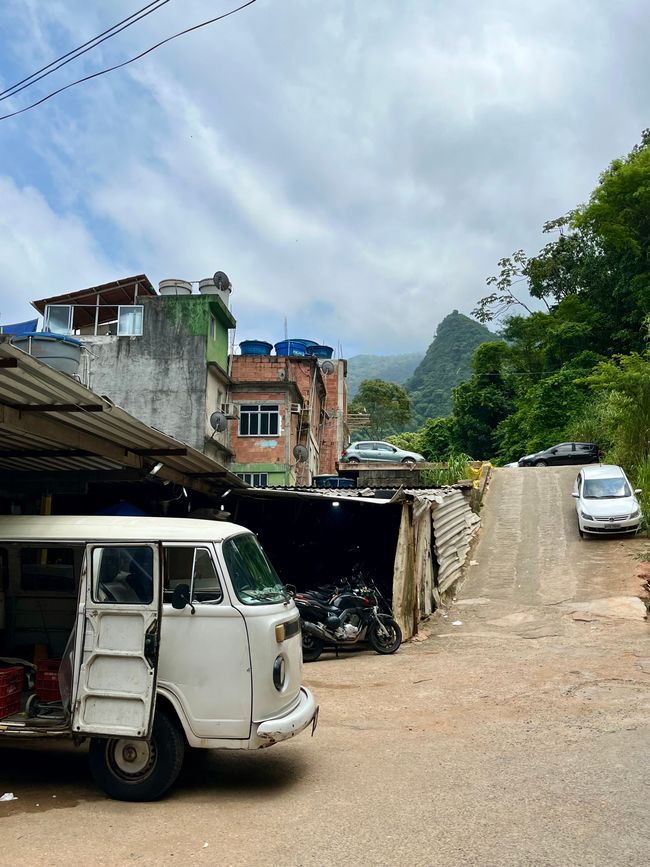
An interesting story on our way through the favela was about the non-existent house numbers or obvious markings on the houses to someone not familiar with the area. This is primarily intended to make orientation more difficult for uninvited guests and it is obvious that these are state control bodies and the police. Mail is dropped off at several collection points and then distributed by residents.

As we got further down, more and more heavily armed people mingled with the residents and it quickly became clear who was in control of the area. In contrast to the Santa Marta favela, this was a slightly different dimension: young people and men in flip-flops and swimming trunks, armed with machine guns, pistols or simply huge knives and machetes. It felt like dozens of them were walking through the alleys or simply hanging around together on a street corner. We were checked out but also left alone. Most likely, part of the income will remain with the guards, who in return guarantee the safety of the visitors.
After about 3 hours we had almost arrived at the exit of the favela and the tour ended with a little excitement: After I had taken a photo of an impressive house silhouette and wanted to turn back into one of the alleys, a short but specific whistle stopped me acoustically continuing to run. I turned around and spotted an armed man in the distance, whom I had not noticed before, who told me to wait.
He came towards me at brisk paces, carrying some modern, large-caliber, fully automatic weapon over his shoulder. He stood in front of me and signaled me to show him my phone and the photo I had just taken. The arguments were clearly on his side and I showed him the photo, which stood up to his critical scrutiny: It was quite clear that the picture was not aimed at him but at the front of the house. Nevertheless, and probably to be on the safe side, he asked me to delete the picture. Of course I complied with the request and everything was fine. It's hard to say how a situation like this will turn out when you obviously photograph a guy like that, but probably not in such a friendly and assertive way.
Shortly afterwards our guide appeared again, the two exchanged a few words and the guy disappeared into an alley.
I have to admit that although the situation was a bit strange, I didn't feel threatened or in danger in any way.
Shortly afterwards the bus picked us up at the exit of the favela and we drove back to the hostel.
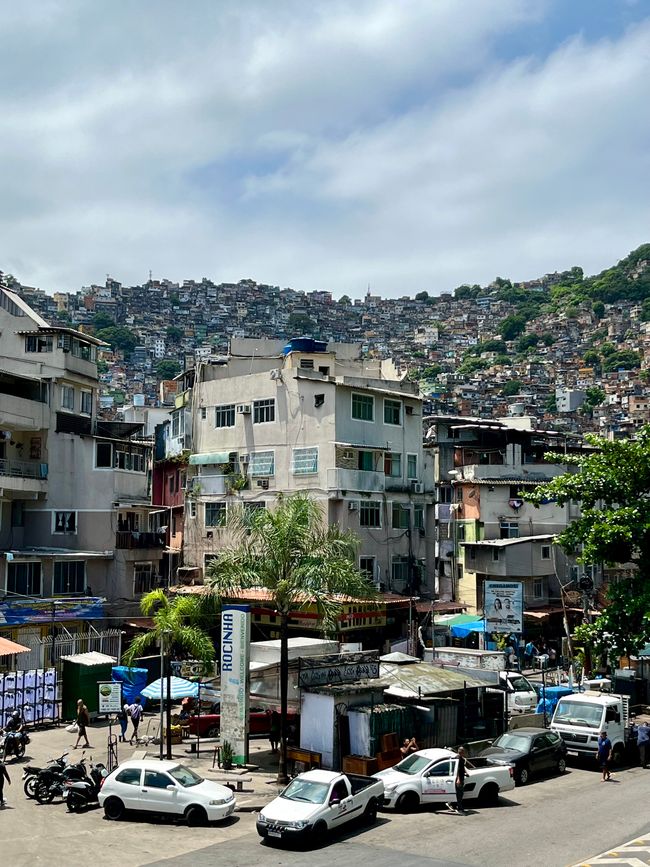
In summary, I would have liked a little more of an authentic insight into people's lives and a little less of a sales event, but it was still quite an interesting and exciting day.
Iscriviti alla Newsletter
Risposta
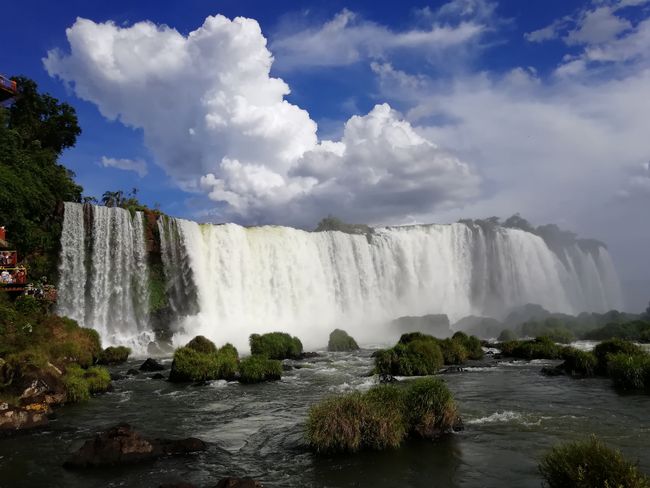
Rapporti di viaggio Brasile
